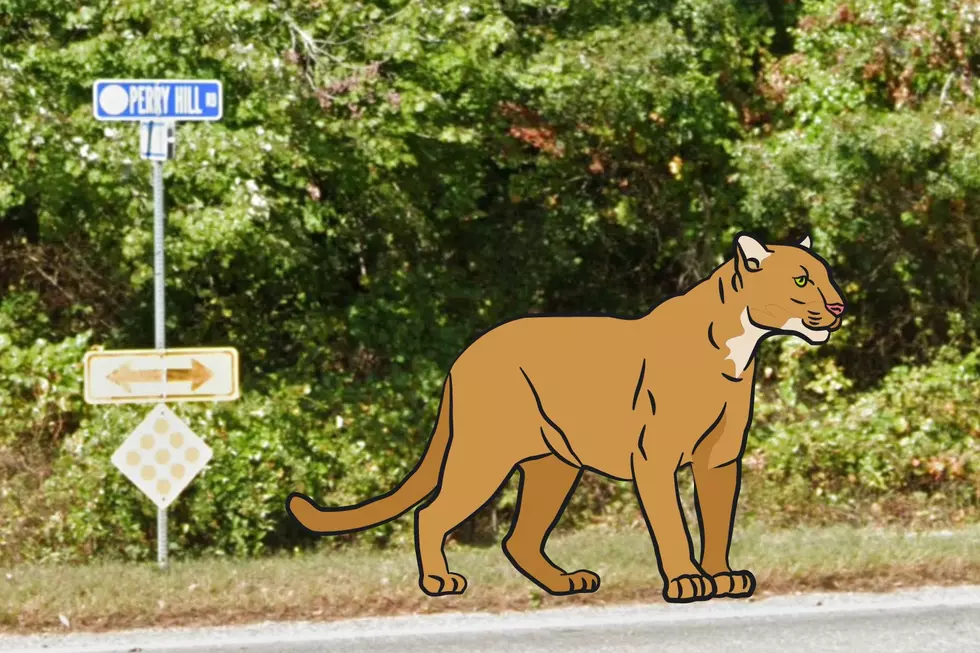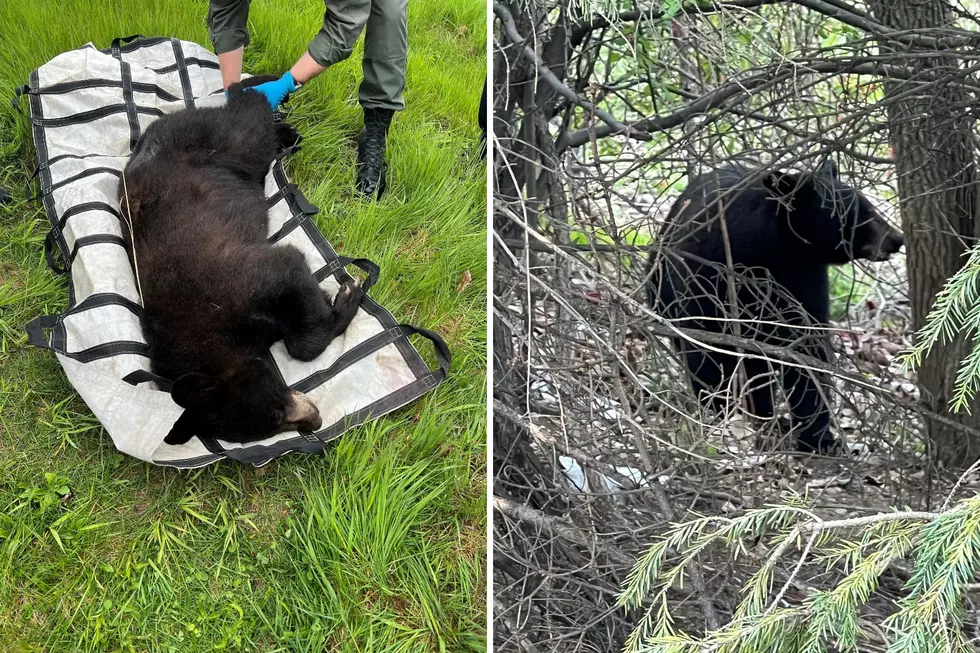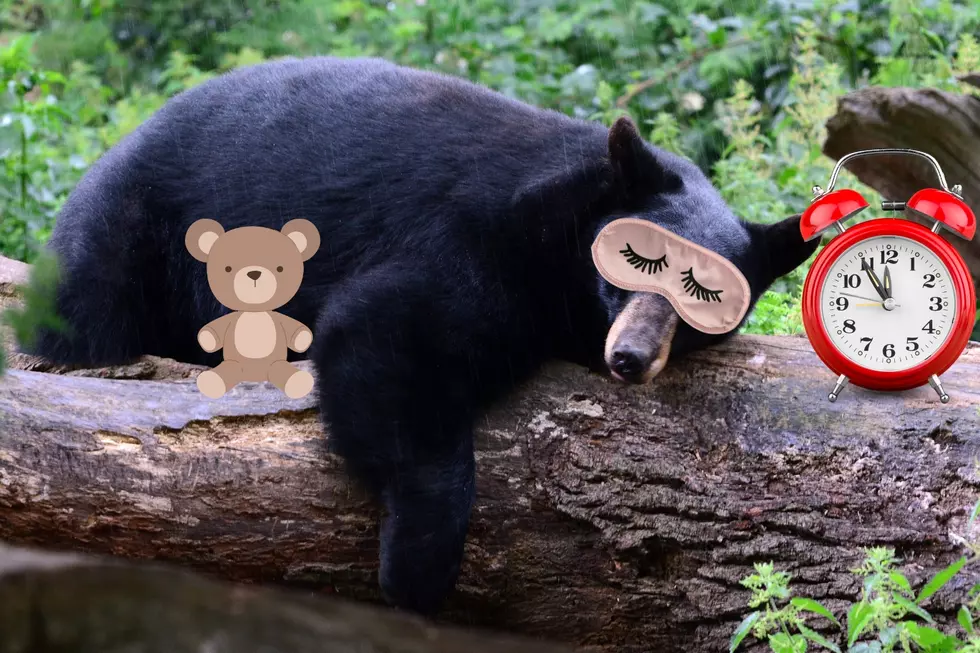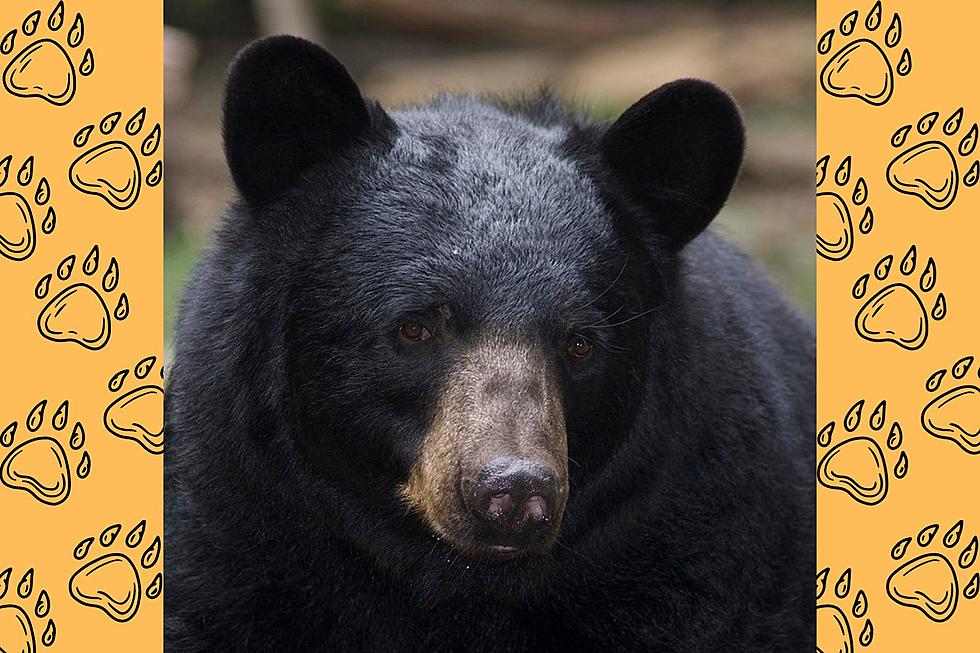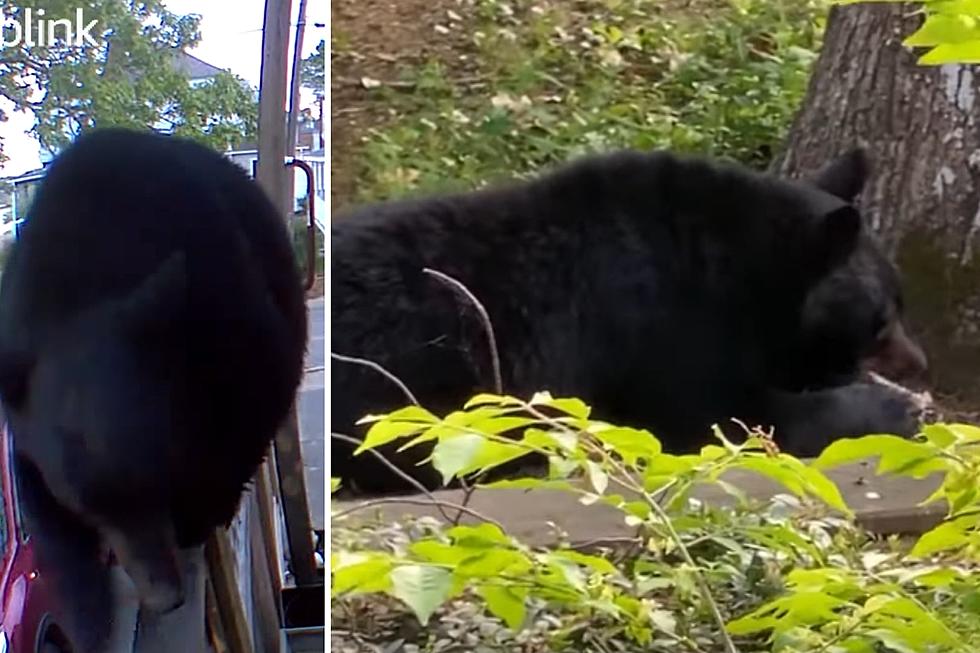
Expert: ‘Almost Certain’ It Was Just One Bear on the SouthCoast
Last week, the SouthCoast couldn’t get enough of the black bear that was making the rounds throughout the various towns in our region.
First, he was spotted in Mansfield and Taunton. Then came a trip to Fall River and Assonet. After a stop in Dartmouth, he later appeared in New Bedford, then again near Pa Raffa’s, before moving on to Acushnet and Marion.
The bear later was captured on film diving into Sippican Harbor in Marion, and after visiting a few more yards there, he moved on to Wareham, and is said to have been spotted in Plymouth and Middleboro over Memorial Day weekend.

We tracked it all on our WBSM Bear Tracker, and with so many sightings over so many miles in so few days, many folks speculated that there were actually multiple bears on the SouthCoast.
According to Dave Wattles, a black bear and furbearer biologist for the Massachusetts Division of Fisheries & Wildlife, that’s probably not the case.
Are There Multiple Bears on the SouthCoast or Just One?
“It’s almost certain that it’s the same bear,” Wattles said on WBSM Tuesday. “You can see as it went from Franklin and Wrentham into Taunton, you can follow the path…It’s pretty much one animal that is moving through all those towns.”
Wattles said that even for a bear, which “can easily cover many miles in a single day,” it has covered quite a bit of ground in such a short period of time.
“It’s a lot. He’s definitely moving, but this is their mating season, so even in our established range, bears are moving quite a lot this year,” he said. “This one is definitely on the move and it’s amazing the distances that he keeps hopping from one town to the next pretty quickly.”
Is the SouthCoast Bear a Male or a Female?
Wattles said it is believed the bear is a two-year-old male, and that’s why he’s wandered into our neck of the woods.
“What’s probably happening with him (is that) our bear population is growing and expanding to the east, and as it does so, young males tend to be the ones that push that leading edge. They disperse out of the established range, just trying to find a territory for themselves,” Wattles said. “So he’s probably wandering, looking for other bears at this point, which is kind of why he’s making this erratic wandering.”
Wattles said that while males typically disperse 50 to 100 miles, females tend to use a portion of their mother’s range when they disperse, so they don’t go nearly as far. Because there is no female on the SouthCoast, the male bear looped through and headed in a different direction.
“That’s what really drives the expansion of our entire population, as females continue to move east,” Wattles said. “We pretty much know there isn’t a female in this area that the bear is moving through.”
Are Bears Eventually Coming to Settle on the SouthCoast?
“Yes, and that’s what we’ve seen over the past 50 years in Western Mass,” Wattles said. “The bear population we have today is the result of a slow expansion and recovery from a remnant population in the northern Berkshires that first spread throughout the Berkshires and down in Connecticut, eventually crossed the Connecticut River, and slowly pushed out to the Worcester area and even further east.”
“So yes, this is a continuous expansion, so we fully anticipate there will be more and more, and there have been more sightings of these young males in the past couple years in Southeastern Mass than we’ve ever seen,” he said. “They should get used to having bears around.”
Were They Really Going to Use Tranquilizers on the Bear and Move It?
There were instances in which law enforcement or animal control officers were seen prepared with tranquilizer guns in case the bear needed to be put to sleep and moved from the area.
“Our plan is not to take any action unless it ends up a very highly developed place like New Bedford,” Wattles said. “Every once in a while, people see that we relocate bears out of Worcester or other majorly developed areas. That’s just because that animal has wandered so far in, there’s not easy escape for it, or it’s likely to be involved with a vehicle collision.”
“That bear in New Bedford was starting to get to that point where there was so much traffic around, so many cars, and it was so deep in it wasn’t likely to get out,” he said. “So there was an attempt made to try to capture it. It would have been taken to a state forest or other natural area, but once it got out of there on its own, it was just allowed to move to these other lower density developed areas.”
Is MassWildlife Tracking the Bear?
“We are studying and monitoring the bear population, so we currently have about 40 females that are collared that we are tracking and monitoring. That allows us to do a bunch of things: we can monitor their survival, causes of mortality, their reproduction,” Wattles said. “Some of our collars have GPS units on them, so we can see their habitat use, their movements, when they cross roads, and really get a big picture of the bear population.”
However, the bear that has been sauntering across the SouthCoast is not being formally tracked.
“We don’t typically collar males, (because) a young male like this will grow very, very rapidly. In the next year, he could put on a hundred pounds, so if you put a collar on that animal there’s a very good chance he’s going to outgrow that collar very quickly,” Wattles said. “Once males get really large, it’s difficult to actually keep a collar on them because their necks are so large compared to their heads.”
He said MassWildlife is just observing where the bear is going in case it needs to take any action.
“Generally speaking, we’re not concerned that it’s moving through these areas,” he said.
Should People on the SouthCoast Be Concerned About Living With Bears?
“The good thing is black bears aren’t inherently aggressive toward people, so that’s why we’re not overly concerned about his presence moving through these neighborhoods, but it’s important to give it space, too,” Wattles said. “They are large, powerful animals. If you see it, give it space.”
He said if you do that, the bear will move on. You can also make a lot of noise – not because it will scare the bear off, though. He said bears are so used to seeing people, you likely can’t scare it, but you’ll at least let it know you are there so you don’t surprise it and have it act defensively.
You also don’t need to worry about the bear attacking pets, although you should keep them on a leash and in your sight.
“Black bears are generally speaking indifferent toward pets,” Wattles said. “Most of the time it’s the dog that goes after the bear.”
How Can People on the SouthCoast Get Used to Living With Bears?
“The biggest thing is not leaving food around, so bears are using forests, they’re using wetlands, but they’re not in people’s backyards and neighborhoods,” Wattles said.
He said in addition to securing garbage and taking in pet food, it is important to keep birdseed from where they can get it – and that means taking in the bird feeders.
“They basically train bears to come back into your yard and come up onto your deck rather than look in the forest, because it’s such a calorie-rich, easy meal for them and they can go house to house to house feeding off bird feeders,” he said.
LOOK: 20 of the biggest insects in the world
Quiz: Do you know your state insect?
More From WBSM-AM/AM 1420


